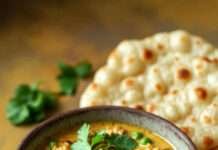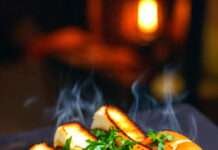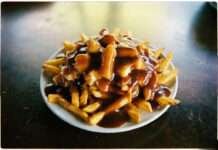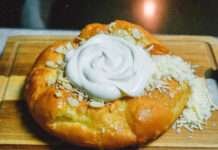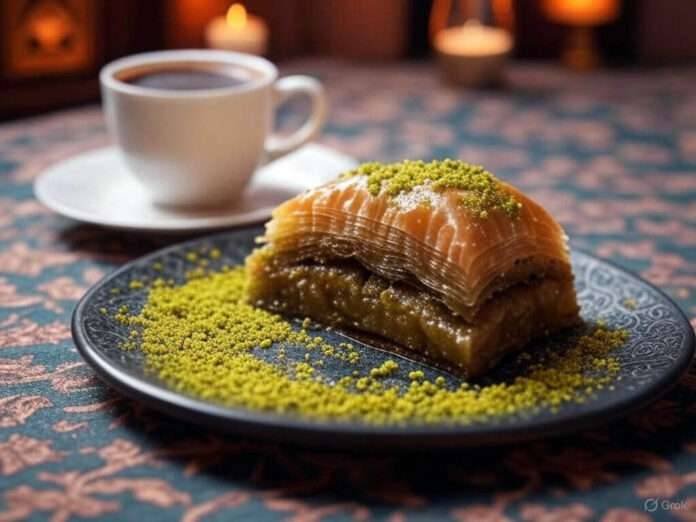Baklava, a heavenly dessert of flaky phyllo pastry, crunchy nuts, and sweet syrup, has been captivating dessert lovers for centuries. Originating from the Middle East and Mediterranean, this treat is a staple in Turkish, Greek, and Arabic cuisines. In this guide, we’ll explore the history of baklava, share an authentic recipe, and provide tips to make your baklava irresistible—all while keeping it simple and fun!
Why Baklava Is a Dessert You Need to Try
Baklava isn’t just a dessert; it’s a cultural masterpiece. With its layers of crisp phyllo dough, rich nut filling, and honeyed syrup, it’s a perfect balance of textures and flavors. Whether you’re new to baking or a seasoned pro, this baklava recipe will bring a taste of tradition to your kitchen. Let’s dive into its origins and how to make it at home.
The Fascinating History of Baklava
Baklava’s roots date back to the Ottoman Empire, with influences from Persian and Arabic cuisines. Some historians, as noted by National Geographic, trace its origins to the 8th century in the Middle East. By the 17th century, baklava became a symbol of celebration in Turkish culture, often served at weddings and holidays. Today, it’s a global favorite, with regional variations in Greece, Lebanon, and beyond.
Why You’ll Love Making Baklava
- Impressive yet doable: Looks intricate but is straightforward with the right steps.
- Customizable: Experiment with different nuts or spices.
- Perfect for sharing: Ideal for gatherings, holidays, or gifting.
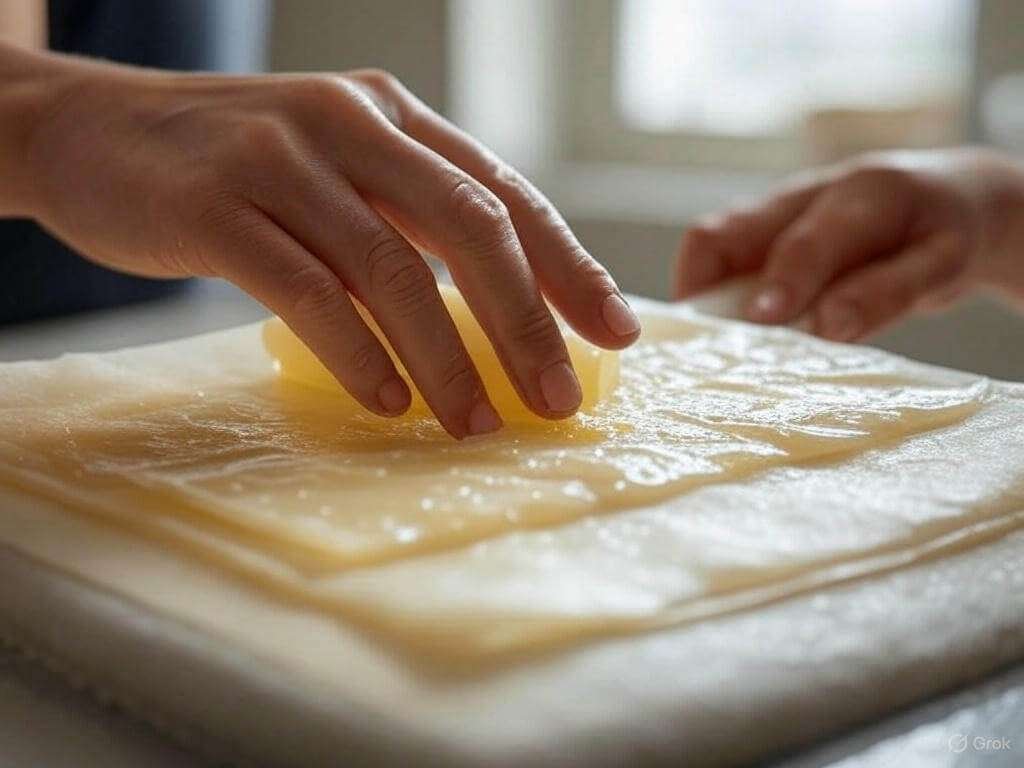
Ingredients
Layers
- 1 lb (450g) phyllo dough, thawed
- 1 cup (225g) unsalted butter, melted
Nut Filling
- 3 cups (300g) walnuts (or pistachios), finely chopped
- ½ cup (100g) granulated sugar
- 1 tsp ground cinnamon
- ¼ tsp ground cloves (optional)
Syrup
- 1 cup (200g) granulated sugar
- 1 cup (240ml) water
- ½ cup (120ml) honey
- 1 tbsp lemon juice
- 1 cinnamon stick (optional)
Tip: Use high-quality nuts for the best flavor, as recommended by Bon Appétit.
How to Make Baklava: Step-by-Step
Prepare the Baklava Nut Filling
- In a bowl, mix chopped walnuts, sugar, cinnamon, and cloves (if using).
- Set aside while you prepare the phyllo.
Assemble the Baklava Layers
- Preheat oven to 350°F (175°C).
- Grease a 9×13-inch baking dish.
- Place one sheet of phyllo in the dish and brush with melted butter. Repeat for 8-10 layers.
- Sprinkle a thin layer of nut mixture (about ¾ cup) over the phyllo.
- Add another 5-6 layers of phyllo, brushing each with butter, then add more nuts. Repeat until all nuts are used.
- Finish with 8-10 layers of phyllo on top, brushing each with butter.
Cut
- Using a sharp knife, cut the baklava into diamond or square shapes before baking.
- Make sure to cut all the way to the bottom of the dish.
Bake
- Bake for 45-50 minutes, until golden and crisp.
- If it browns too quickly, cover with foil.
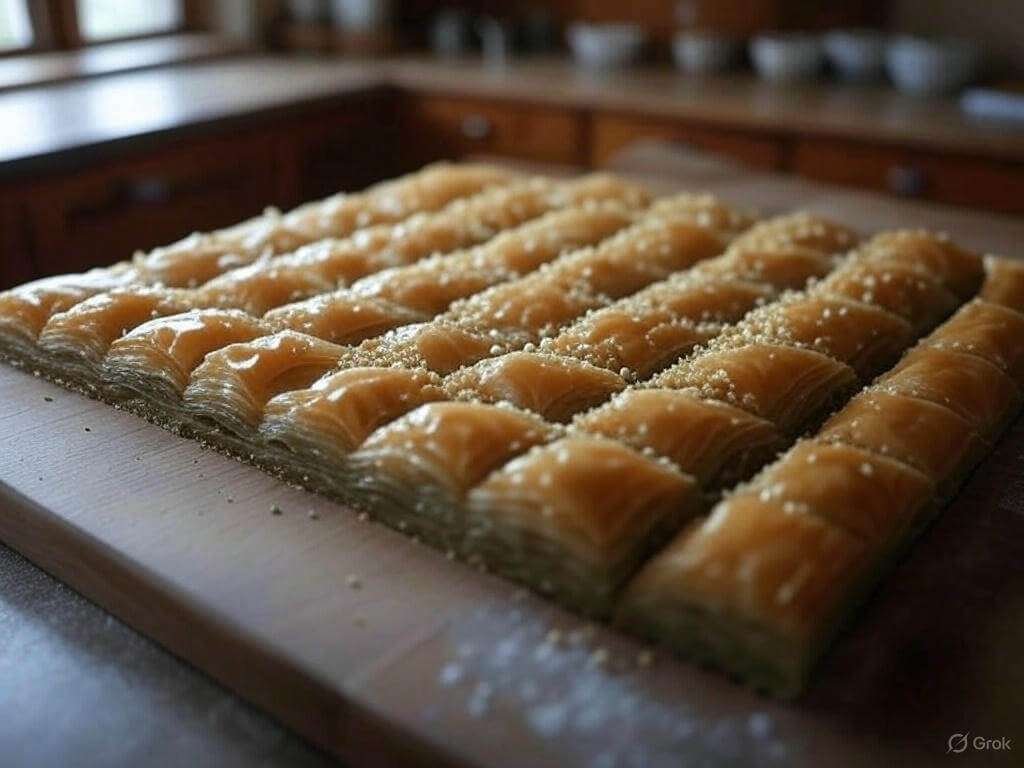
Make Syrup
- While the baklava bakes, combine sugar, water, honey, lemon juice, and cinnamon stick in a saucepan.
- Bring to a boil, then simmer for 10 minutes until slightly thickened.
- Remove from heat and let cool slightly.
Finish and Serve
- Pour the warm syrup evenly over the hot baklava straight from the oven.
- Let it sit for at least 4 hours (or overnight) to absorb the syrup.
- Serve at room temperature, garnished with extra nuts if desired.
Tips
- Keep phyllo moist: Cover with a damp towel while working to prevent drying, as advised by Serious Eats.
- Cut before baking: This ensures clean slices and helps the syrup soak in.
- Let it rest: The longer it sits, the better the flavors meld.
- Use a sharp knife: A dull knife can tear the delicate layers.
Baklava Variations to Explore
- Pistachio Baklava: Swap walnuts for pistachios for a vibrant, nutty flavor.
- Rosewater Twist: Add a teaspoon of rosewater to the syrup for a floral note.
- Chocolate Drizzle: Drizzle melted dark chocolate over the top for a modern touch.
Why Baklava Is a Showstopper
Baking baklava is a rewarding experience that brings a taste of the Mediterranean to your table. Its rich history and irresistible layers make it a dessert that’s perfect for celebrations or a sweet indulgence. According to The Guardian, baklava’s universal appeal comes from its balance of sweetness and crunch, making it a timeless treat.





